|
Hot Topics: Looking for Microbes Rachel
Haymon is a marine geologist and sulfide geochemist in the Department
of Geological Sciences at the University of California - Santa
Barbara. She and Dan Fornari have been collaborating for the last
decade on several projects involving hydrothermal and marine geological
research at the East Pacific Rise in the 9°-10°N area. 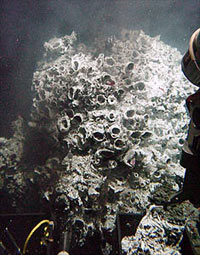 A clump of Alvinellid worms on “Dave” Vent that was sampled for the experiment. If you look closely at the photo you can see the small red worms sticking out of their tubes. 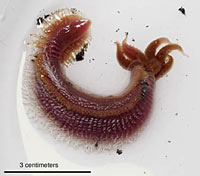 One of the Alvinellid worms recovered from “Dave” Vent. 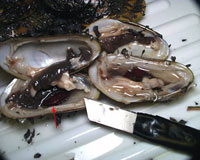 A close-up view of a hydrothermal vent mussel, note the small arrow to the left of the razor blade that points to the small flat worm that lives with the mussel. 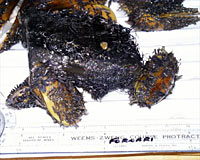 A sample of lobate lava covered with mussels, both large and small, collected from the base of TY vent. 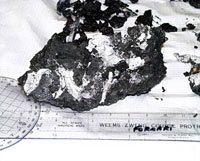 Photograph of one of the samples of “Dave” Vent that will be used for the microbe experiment. Rachel
sent Dan an email on December 5, 1999 with an idea that she and
Dr. Patricia Holden, a microbiologist at UCSB, had regarding some
of the hot sulfide chimneys. They requested that we use Alvin to
collect pieces of the crystalline “chimneys” that precipitate
around the hot "black smoker" fluids which had Alvinellid worms
growing on them. They also wanted a sample from an active chimney
that did not have any Alvinellid worms growing on the sulfide surface. [Click
HERE to learn all about hydrothermal vents] On Dive 3531 (expedition
2, day 6), Pat Hickey collected a sample from "Dave" Vent for this
experiment |
|
© 2010 Dive and Discover™. Dive and Discover™ is a registered trademark of Woods Hole Oceanographic Institution
|
|
